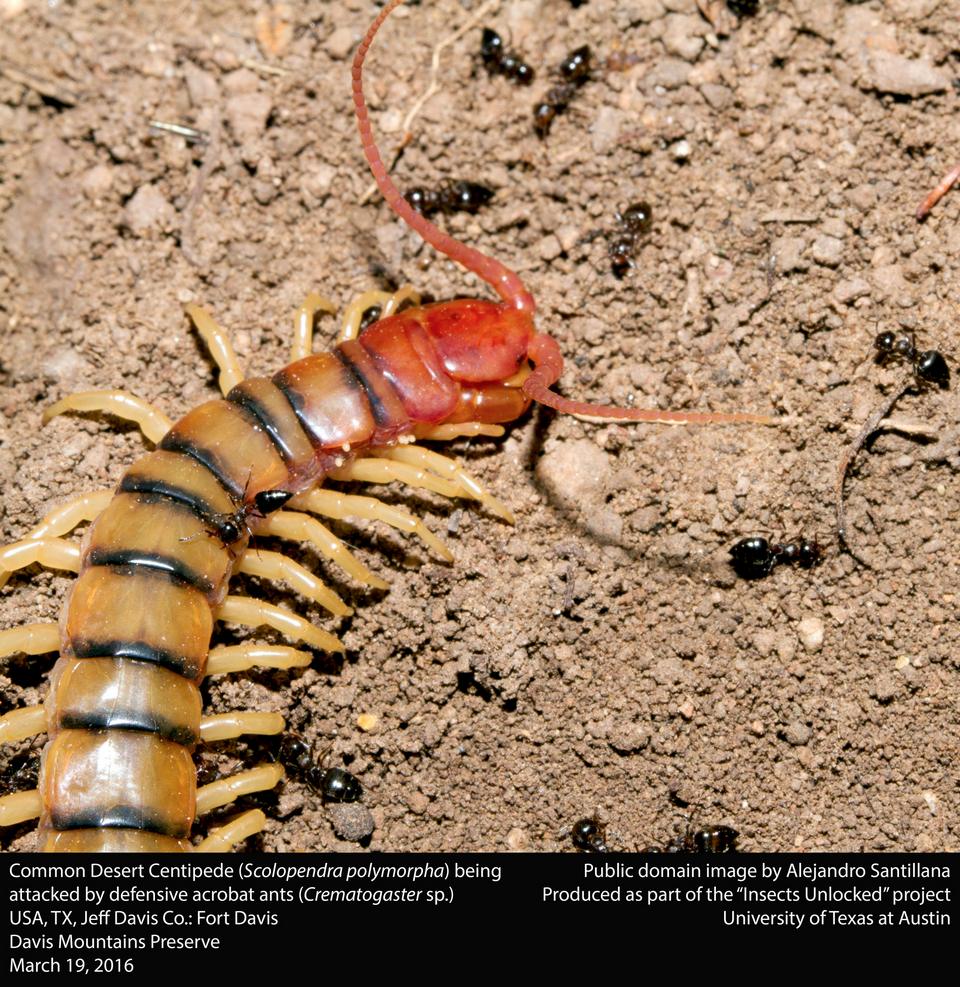
When it comes to ants, much is said about certain kinds, so people are often quite aware of those types of ants. For instance, people are likely to know about carpenter ants, sugar ants, driver ants, army ants, and fire ants. There are many more kinds, though. One of those is called the acrobat ant.
About acrobat ants
Acrobat ants are in the genus Crematogaster. The ‘gaster’ part of the genus name is a reference to the abdomen, which these ants can raise up and over their thorax. This allows them to sting in nearly any direction. There are over 400 species of acrobat ants.
This ant is also called cocktail ants or Saint Valentine ants. These are tiny ants, often about 1/16th of an inch or less in length, but they are aggressive biting and stinging ants. The coloration is black, brown, red, or a combination.
Predatory ant

Acrobat ants are active predators and will attack insects that are much larger than themselves. The prey includes several species of wasp. They nest in varied places; in trees, in homes, in wood piles, under rocks, and so forth.
They are also found in many different countries, so they have a wide distribution.
Egg layers
One thing that is a bit different about these ants has to do with the laying of eggs. With most species of ants, only the fertilized queen ant lays eggs. If the queen, or queens if there are more than one, die, the colony dies. The worker ants are infertile females that are unable to lay eggs, so when the workers die, no more workers are produced.
With acrobat ants, though, some colonies have what can be called ‘large worker’ ants. These individuals are larger than typical worker ants but are smaller than queen ants. What makes them unusual is that large workers can lay viable eggs. Killing the queen ant doesn’t kill the colony because the large workers replenish the colony by laying eggs.
Plant protector
Acrobat ants are also highly protective of their host plant or tree. If the plant is harmed, it often causes the ants to rush out in defense, immediately aggressively attacking whatever caused the harm. Sometimes, merely brushing against the plant is enough to trigger this response.
Although most people have probably not heard of acrobat ants, they are numerous and are found over a huge range. They may be tiny, but the colonies can be quite large, so these can be formidable ants to have to deal with. They can be bothersome and can deliver painful bites and stings, yet they do a great deal of good by destroying many insect pests.



Interesting post. I will try to stay away from those!
That is wise, though it isn’t always possible. Still, it is worth knowing about them and giving at least some effort to leave them alone.
Learn Much About there ants Thnxx!
It is always a good thing when we have the opportunity to learn something new.
I learned a lot about this type of ants. Interesting
I’m very glad to hear that.
At the Virily community we can find interesting articles but most interesting to me are those about animals and miracles of nature.
I tend to agree, though that isn’t all I write about.
You wrote this beautifully … it’s a new lesson for me. Thank you very much.
I’m very glad that you liked the article and that I was able to help with knowledge.
I read once that in some ant species, worker ants can lay eggs but that all of the eggs will produce other worker ants which are all female. No males and no queens. Is that the case with these large workers?
I’m not sure, but it is likely. Otherwise, acrobat ants could quickly overpopulate. The large workers would be able to expand the size of the nest, but if they could lead to new queens and drones, I can’t think of much that would stop them from spreading out enough to cover millions of acres and to dominate.
I wonder if there is something which controls how many of the workers can lay eggs. I know some worker bees will lay eggs on the the death of the queen but they produce other workers. One of them is fed something special which makes the worker larvae become a queen and then the worker stops laying eggs. Since they are both Hymenoptera, there might be some similarities.
Many bees have the unique ability of causing larvae to develop into queens based on what they feed them. If they feed on “royal honey”, they become queens, fully capable of taking over on the death of the queen.
I’m sure that there is something that controls the number of workers become large workers and how many eggs they can lay. In fact, studies have shown that if there is a queen, they don’t lay many eggs. If the queen dies, they lay a lot of eggs. That isn’t a coincidence, though science hasn’t figured out what the cause is.
Amazing to learn even more about nature I never knew.
My guess would be that most people have never heard of acrobat ants, even though it is likely that they’ve seen one species or another.